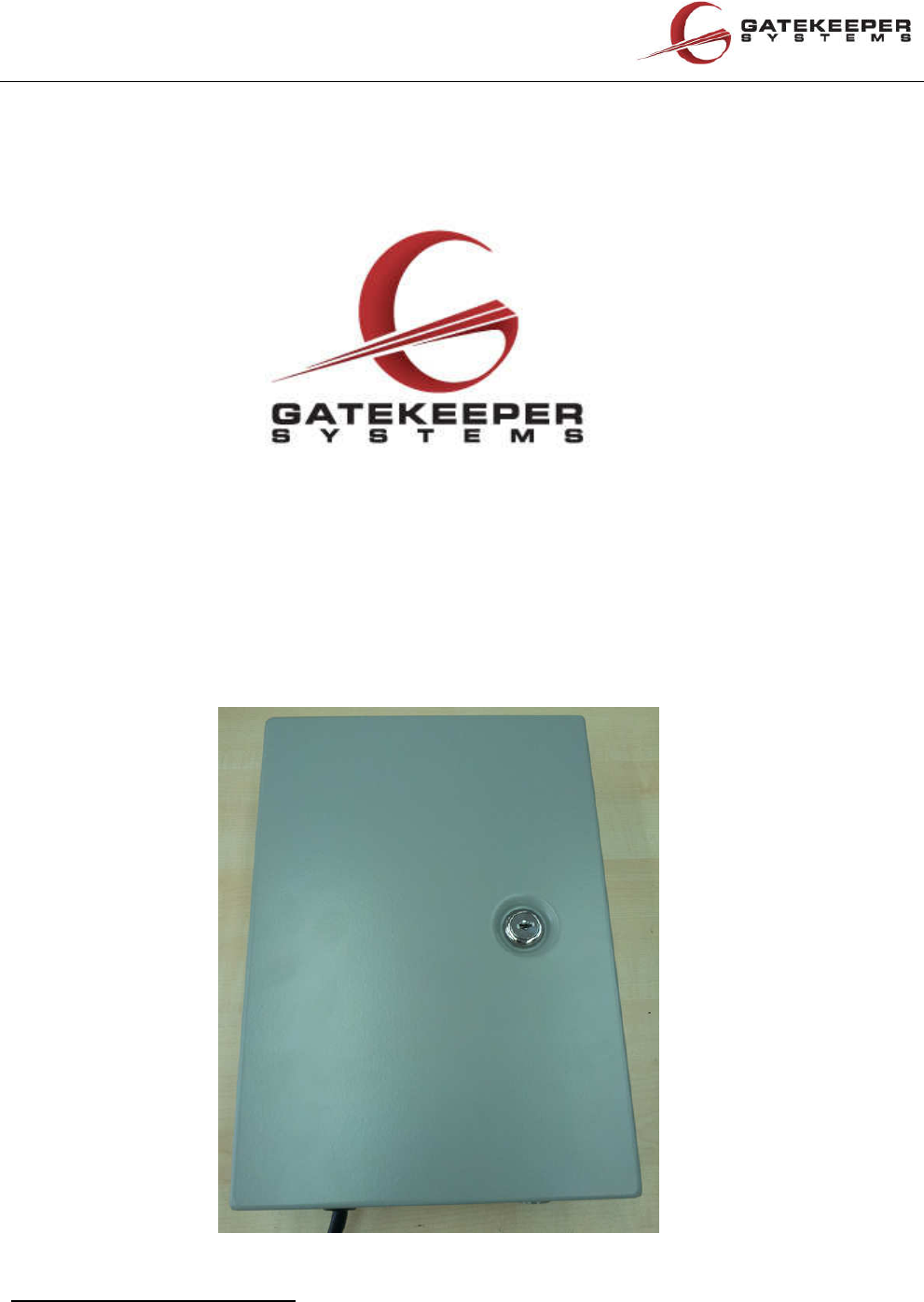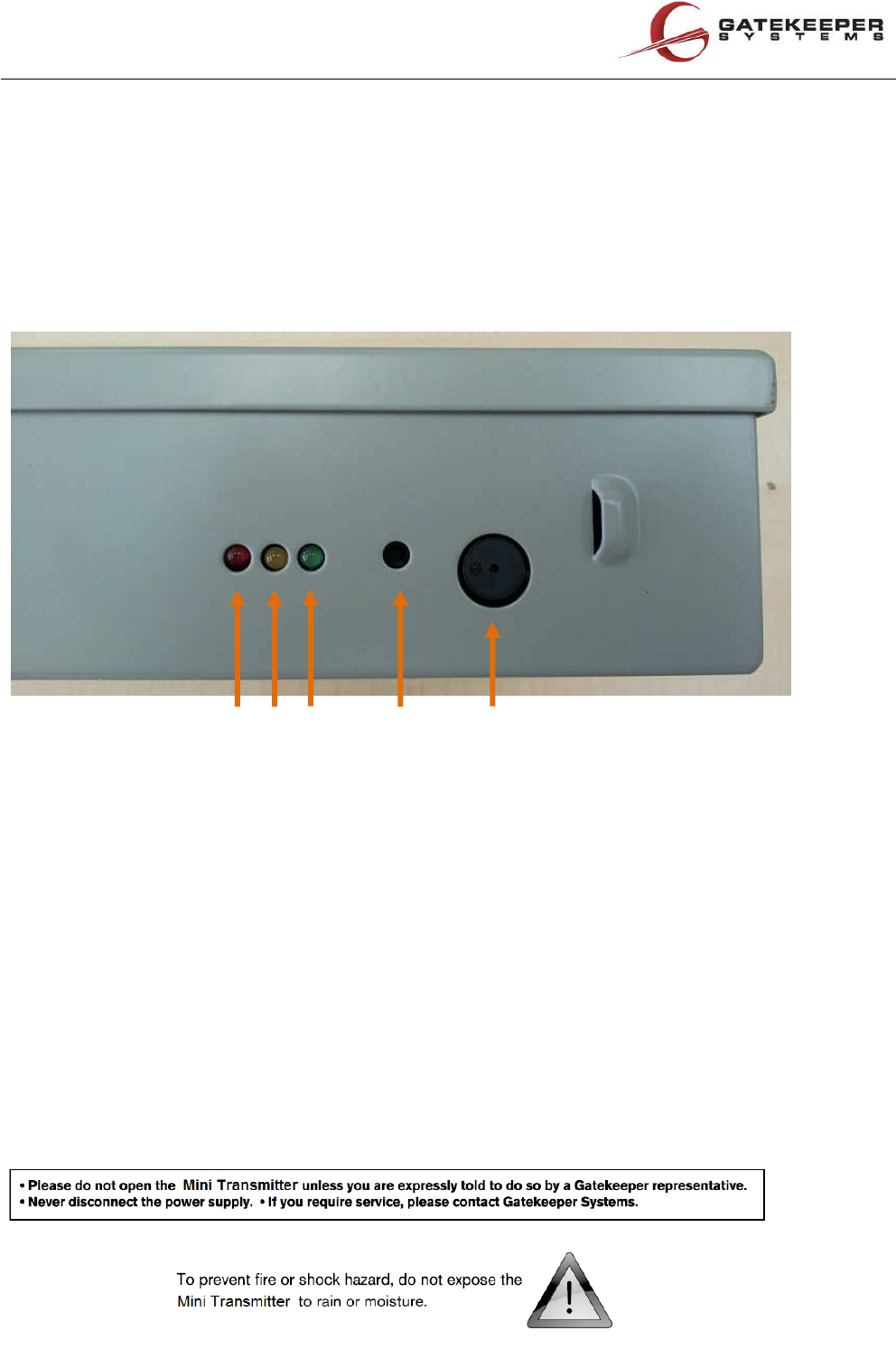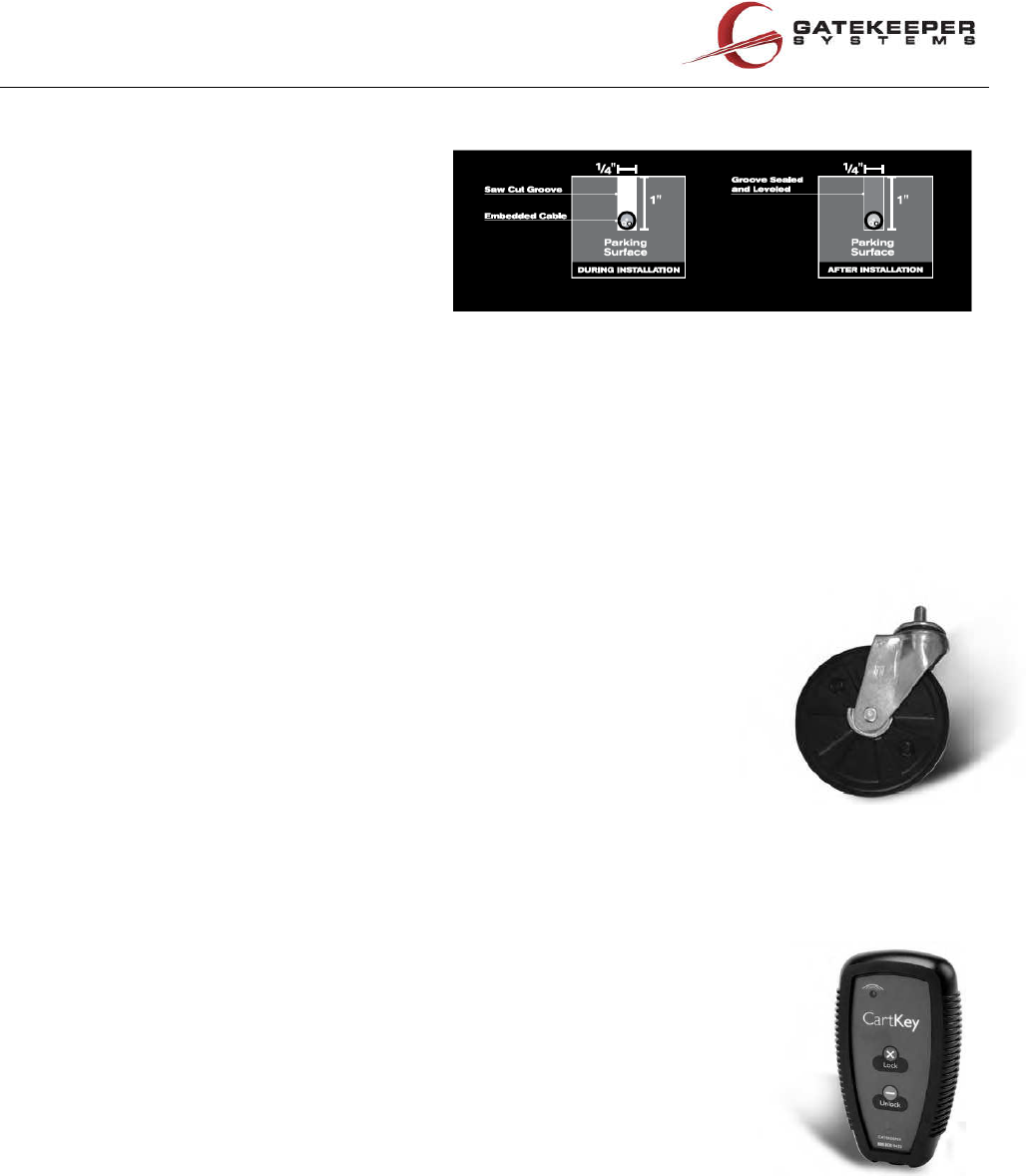Gatekeeper Systems D9129 Mini Central Transmitter User Manual D 9129 Service Manual v01
Gatekeeper Systems (HK) Ltd. Mini Central Transmitter D 9129 Service Manual v01
user manual

1
CONFIDENTIAL
D-9129 Mini Central Transmitter
Service Manual
INSTRUCTION TO THE USER

2
CONFIDENTIAL
This equipment has been tested and found to comply with the limits for a class B digital device,
pursuant to part 15 of the FCC rules. These limits are designed to provide reasonable
protection against harmful interference in a typical installation. This equipment generates uses
and can radiate radio frequency energy and if not installed and used in accordance with the
instructions, may cause harmful interference to radio communications. However, there is no
guarantee that interference will not occur in a particular installation. If this equipment does
cause harmful interference to radio or television reception, which can be determined by turning
the equipment off and on, the user is encouraged to try to correct the interference by one or
more of the following measures:
• Reorient or relocate the receiving antenna on the device experiencing the interference
• Increase the separation between the equipment and receiver.
• Connect the equipment into an outlet on a circuit different from that to which the Door
Manager is connected
• Consult the dealer or experienced technician for the device experiencing the interference
In order to maintain compliance with FCC regulations, no changes can be made to this
equipment without the approval of Gatekeeper Systems, Inc. The user is cautioned that any
changes or modifications made to the equipment without the approval of Gatekeeper Systems,
Inc. could void the user’s authority to operate this equipment.
Operation is subject to the following two conditions: (1) this device may not cause interference,
and (2) this device must accept any interference, including interference that may cause
undesired operation of the device.
This device complies with Industry Canada licence-exempt RSS standard(s). Operation is
subject to the following two conditions: (1) this device may not cause interference, and (2) this
device must accept any interference, including interference that may cause undesired operation
of the device.
Le présent appareil est conforme aux CNR d'Industrie Canada applicables aux appareils radio
exempts de licence. L'exploitation est autorisée aux deux conditions suivantes : (1) l'appareil ne
doit pas produire de brouillage, et (2) l'utilisateur de l'appareil doit accepter tout brouillage
radioélectrique subi, même si le brouillage est susceptible d'en compromettre le fonctionnement.
This Class B digital apparatus complies with Canadian ICES-003.
Cet appareil numérique de la classe B est conforme à la norme NMB-003 du Canada.
CAUTION: RISK OF EXPLOSION IF BATTERY IS REPLACED BY AN INCORRECT TYPE.
DISPOSE OF USED BATTERIES ACCORDING TO THE INSTRUCTIONS
The ambient temperature is -20°C to 50°C

3
CONFIDENTIAL
Mini Central Transmitter:
The Mini Central Transmitter is located in an area that is secure, has adequate air flow, is out of harm’s
way, and accessible for service. Typically, this area is found near the receiving area at the rear of the
store. The Mini Central Transmitter sends the locking signal and unlocking signal through the perimeter
antenna. Once installed and plugged directly in to a 85-264volt AC outlet or Universal Power Supply
(UPS), the Central Transmitter rarely requires service.
Mini Central Transmitter side panel detail:
1.
Alarm Buzzer
Alarm will be ON while fault
2.
Alarm Reset Switch
Turn OFF the Alarm
3.
Power Indicator Light
Green LED to indicate the power is ON
4.
Battery Indicator Light
Yellow LED to indicate the battery charging
5.
Alarm Indicator Light
Fault Setting
Alarm Buzzer
Alarm Reset Switch
Power Indicator Light
Battery Indicator Light
Alarm Indicator Light

4
CONFIDENTIAL
SYSTEM COMPONENTS
Perimeter Antenna
The signal generated by the
CentralTransmitter
is carried around the
designated store perimeter
by a small, embedded cable
known as the “Perimeter Antenna”. This antenna is embedded in a 1/4” wide by 1” deep
saw cut around the parking lot which is sealed using a weatherproof sealant. The
location of the perimeter antenna determines the boundary where carts will lock. The
perimeter boundary is typically identified by a thick, painted yellow line found at all
parking lot exits.
Gatekeeper wheel
Each shopping cart is equipped with Gatekeeper’s locking wheel.
Inside each wheel is a signal receiver and locking mechanism.
The receiver is factory programmed to listen for the locking signal
emitted from the perimeter antenna. The Gatekeeper wheel also
accepts a locking or unlocking signal from a CartKey remote control.
CartKey2
The CartKey is a handheld device used by store employees to lock or
unlock Gatekeeper wheels. The touch pad on the front of the CartKey has two
buttons labeled “Lock” and “Unlock”. Use the “Unlock” button to unlock
carts that have locked wheels. Gatekeeper recommends that
you keep at least one CartKey in a secure location at all times in order to
avoid losing or temporarily misplacing all CartKeys.

5
CONFIDENTIAL
Contacting Gatekeeper Systems
For more information about the Central Transmitter and troubleshooting, to order parts
or report an issue, contact the Gatekeeper Systems Inc. regional Customer Support
office nearest to your location.
USA
Gatekeeper Systems, Inc.
8 Studebaker
Irvine, CA 92618
(888) 808-9433
Hong Kong
Gatekeeper Systems (HK), Ltd.
Unit 2318~2319, Level 23, Tower 1, Metroplaza
NO. 223 Hing Fong Road, Kwai Fong, N.T.,
HONG KONG
(852) 2413 3050
Canada
Gatekeeper Systems Canada, Ltd.
272 Galaxy Boulevard
Etobicoke, Ontario
Canada
M9W 5R8
(888) 525-3564